Showing 133–144 of 1182 results
This book is a celebration of India through Hindu eyes. Those eyes are of sages and kings, artists and artisans, potters and poets, rasikas and bhaktas. In that journey we remember the almond-shaped eyes of Shrinathji, the round eyes of Jagganathji. Those are human eyes through which we have received the darshan of our gods and goddesses and also the blessings of our elders and teachers. Those eyes are ancient and have witnessed magnificent kingdoms and trackless empires. They have watched the creations of monumental temples as well as charming havelis. They have travelled through the pages of history and chronicled the glory of the raja and the praja. Hindu eyes see the past even when they watch the present for they guide us through linear time but when we close our eyes we contemplate in circular time. Our eyes delight in asserting the finite but they rest when they find the infinite. They rejoice in the various akritis but they direct us to our sanskriti. They have been witness to our love stories and heroic sagas. They have smiled and spoken, invited and whispered. Hindu eyes belong to our mind which is buddhi pradhan but they throb with our heart which is bhava pradhan. They are the eyes of a people for whom adornment is beautiful but the serenity of ananda is blissful, for those eyes are the windows of our atman forever seeking the Brahman. Join us in this celebration.
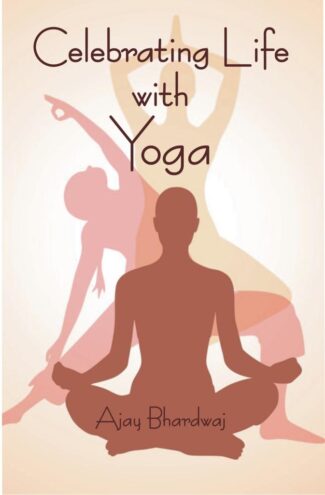
This volume addresses the wisdom of yoga with a practical approach. It unveils yoga in its true sense. Yoga is not meant for doing, but for being; being in our real nature, being in complete communion with the Supreme Consciousness, i.e. Truth, Bliss and Consciousness, enabling one to celebrate his life.
This volume addresses the wisdom of yoga with a practical approach. While many people think of yoga simply as a series of postures and breathing exercises, which is only a part of the vast yoga wisdom, it unveils yoga in its true sense. Yoga is not meant for doing, but for being; being in our real nature, being in complete communion with the Supreme Consciousness, i.e. Truth, Bliss and Consciousness.
Yoga helps one to discover oneself who am I? And the moment we know who we really are, every moment of life becomes a celebration. Yoga is thus the key to celebrating the life festival. Giving an introduction to the origin, history, traditions and different paths and aspects of yoga, the book authoritatively answers the basic questions: how can we apply yoga in our personal, family and social life?, what are the causes of suffering?, how can we live a stress-free and blissful life? and how can we attain the supreme goal of life, i.e. Self-realization, God-realization?
As the book is designed to conform to the course contents of yogic science of Indian universities, it will be of great use to students, academicians and yoga aspirants alike.
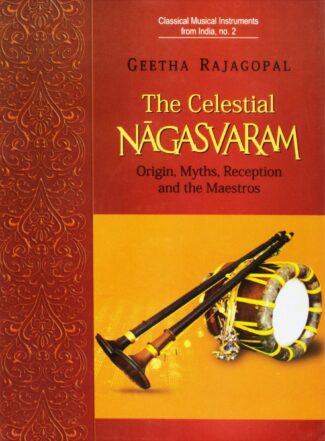
This book makes an in-depth study of the history of evolution, penetration and growth of nagasvaram into the cultural moorings of south India. It makes a systematic study of nagasvaram from different perspectives, its accompanying instruments, its relevance in temple festivals, marriages, the traditions associated, its prevalence and acceptability among south Indian states. It also introduces the all-time great maestros of nagasvaram.
Nagasvaram, worlds loudest non-brass acoustic instrument, is known as mangala vadyam (auspicious instrument), and raja vadyam (king of all instruments). This popular wind-group musical instrument is well known all over the south Indian states, more specifically in Tamil Nadu. Its origin is associated with the Thiruvarur Temple and its legacy continued all through the Pallavas, Colas, Pandyas, Nayakas, and Marathas. It has imprinted its sheen on all the rituals, especially, on the temple festivals and marriages.
This book makes an in-depth study of the history of evolution, penetration and growth of nagasvaram into the cultural moorings of south India over a period of 800 years. It makes a systematic study of nagasvaram (myths associated with it, its making, types, etc.), its accompanying instruments, its relevance in temple festivals, marriages, the traditions associated with nagasvaram, its prevalence and acceptability in Andhra Pradesh, Karnataka and Kerala, in addition to Tamil Nadu where it rules the roost. It widely introduces the great maestros of nagasvaram, for whom it was a nishkama karma.
Kings, temples and mathas were the promoters of this blissful instrument. At present this artform faces severe challenges from the all-pervasive Western musical instruments. The author suggests ways and means of how to maintain the legacy of nagasvaram live, and the need to preserve the rich heritage of our musical tradition for the benefit of our posterity to realize the Supreme Bliss in their life.
This book, rare of its kind, will enthrall those who are keen on instrumental music, especially the faculty, students, and professionals in the field of music, religion and art.

This book makes an in-depth study of the history of evolution, penetration and growth of nagasvaram into the cultural moorings of south India. It makes a systematic study of nagasvaram from different perspectives, its accompanying instruments, its relevance in temple festivals, marriages, the traditions associated, its prevalence and acceptability among south Indian states. It also introduces the all-time great maestros of nagasvaram.
Nagasvaram, worlds loudest non-brass acoustic instrument, is known as mangala vadyam (auspicious instrument), and raja vadyam (king of all instruments). This popular wind-group musical instrument is well known all over the south Indian states, more specifically in Tamil Nadu. Its origin is associated with the Thiruvarur Temple and its legacy continued all through the Pallavas, Colas, Pandyas, Nayakas, and Marathas. It has imprinted its sheen on all the rituals, especially, on the temple festivals and marriages.
This book makes an in-depth study of the history of evolution, penetration and growth of nagasvaram into the cultural moorings of south India over a period of 800 years. It makes a systematic study of nagasvaram (myths associated with it, its making, types, etc.), its accompanying instruments, its relevance in temple festivals, marriages, the traditions associated with nagasvaram, its prevalence and acceptability in Andhra Pradesh, Karnataka and Kerala, in addition to Tamil Nadu where it rules the roost. It widely introduces the great maestros of nagasvaram, for whom it was a nishkama karma.
Kings, temples and mathas were the promoters of this blissful instrument. At present this artform faces severe challenges from the all-pervasive Western musical instruments. The author suggests ways and means of how to maintain the legacy of nagasvaram live, and the need to preserve the rich heritage of our musical tradition for the benefit of our posterity to realize the Supreme Bliss in their life.
This book, rare of its kind, will enthrall those who are keen on instrumental music, especially the faculty, students, and professionals in the field of music, religion and art.
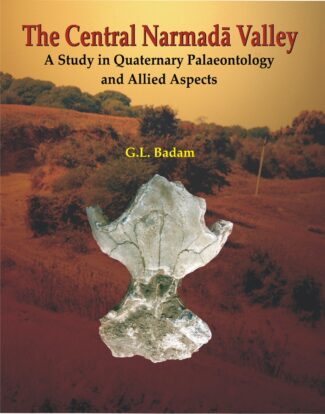
The book is the first attempt at studying a small stretch of the Narmada Valley from a multidisciplinary point of view incorporating the results of archaeology, geology, palaeontology and taphonomy. The modern analogies attempt to build up a palaeoecological model for Narmada and its surrounding areas including the rock shelter sites.
The book The Central Narmada Valley: A Study in Quaternary Palaeontology and Allied Aspects is the first attempt at studying a small stretch of the valley from a multidisciplinary point of view incorporating the results of archaeology, geology, palaeontology and taphonomy. New techniques and parameters have been applied to study and re-interpret these areas. This book also summarizes the morphology, distribution pattern and evolutionary history of certain extinct animals in relation to cultural development. With the help of modern analogies, the book attempts to build up a palaeoecological model for Narmada and its surrounding areas including some of the rock shelter sites. The book extends the dimensions of understanding the life history of Narmada and its tributaries, not only by discovering and reinterpreting various biological and cultural events, but also by seeking to understand varied aspects like river behaviour, flood history and man-land relationship during the past. The book should prove useful to students and researchers of river valley cultures in general and to those of Narmada Valley in particular.
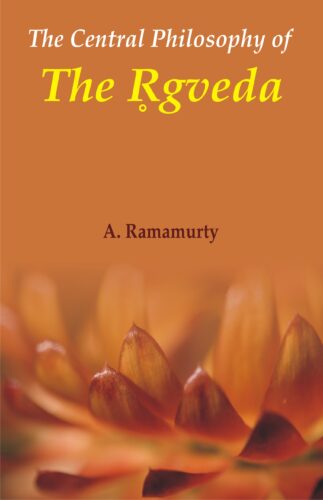
The book deals chiefly with the Rigvedic concept of divine, and the mode of divine revelation to the Vedic seers. It is a work of its kind in the field of Vedic Interpretation and offers a new perspective and direction to understanding the meaning of Vedic thought and symbolism.
Rigveda, a collection of hymns which are primarily prayers and praises addressed to various deities, is a religious/spiritual classic which influenced the formation and development of Indian way of life and culture. The concept of divine is central to it. The meaning of divine though has undergone significant changes in the long history of Hinduism depending upon its interaction with other world religions, the basic Vedic idea of divine still remains central to the Hindu concept of divine or God.
In this work we discuss mainly the meaning of divine and the mode of its revelation to the seers of the Rigveda in the state of divinely inspired devotion. This is what the Veda reveals or says about itself. To understand this claim of the Veda requires a deep understanding of the Vedic symbolism employed in communicating the meaning of divine inspiration. The seer-poets resort to symbolic use of language to communicate their vision of the divine, the birth of divine consciousness in them and its expression in the form of hymns. By closely following the text of the Rigveda, one can understand the symbolic use of certain words, and appreciate the meaning of the Veda which would otherwise be highly obscure and utterly unintelligible. Unless we understand the meaning of divine and the mode of its revelation to the Vedic seers it is difficult to understand and appreciate the meaning of the Veda or to interpret it. The Veda in its literary form comes into existence when the divinely inspired devotion is expressed in the form of prayer or hymns. When divine inspiration is offered back to the divine in the form of prayer and praise, human life finds its supreme fulfilment, and its attitude to world or nature gets transformed into one of reverence and worship.
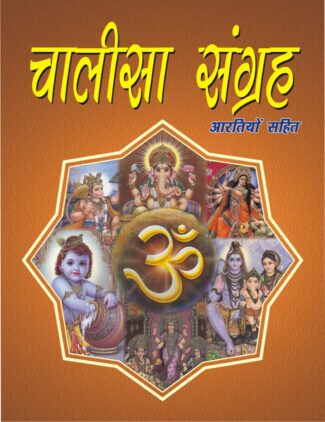
This book is a collection of the stutis (chalisas) of Lord Ganesh, Hanuman, Shani, Batuk Bhairav, Siva, Krishna at one end and Goddess Lakshmi, Durga, Vindhyeshvari, Gayatri, Sarasvati at the other. All these chalisas in a single book makes it unique.
This book is a collection of the stutis (chalisas) of Lord Ganesh, Hanuman, Shani, Batuk Bhairav, Siva, Krishna at one end and Goddess Lakshmi, Durga, Vindhyeshvari, Gayatri, Sarasvati at the other. All these chalisas in a single book makes it unique.
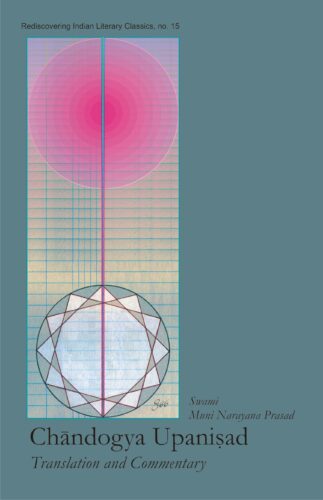
Chandogya is the most intriguing of all the Upanisads. It begins with directing the priests of a Soma-yaga to see the hidden wisdom-significance in what they perform and recite as a brute ritual. The present commentary explicates in a lucid way how thinking progresses in this Upanisad, along with unravelling its schematic, structural and dialectical intricacies, both subjective and objective, both universal and particular.
Chandogya is the most intriguing of all the Upanishads. It begins with directing the priests of a Soma-yaga to see the hidden wisdom-significance in what they perform and recite as a brute ritual. This sublimating of ritualism gradually leads us to perceiving the entire life system as a yaj¤a held in and performed by Brahman. The next step this perception leads us to is “sarvam khalvidam brahma” (everything here indeed is Brahman). Then the enquiry as to what this Brahman is, begins. The answer we arrive at is “tat tvam asi” (That thou art). Finally we realize “atmaivedam sarvam” (atma indeed is everything here, or myself indeed is everything here). From this self-identity with “everything,” with Brahman, we never return to our identity with individuated forms pertaining to the world of becoming. The present commentary explicates in a lucid way how thinking progresses in this Upanishad, along with unravelling its schematic, structural and dialectical intricacies, both subjective and objective, both universal and particular.

Based on diverse original sources, this is a well-knit narrative delineating Chandragupta Mauryas personality, his times, and his meteoric rise to political supremacy with contextual focus on polity, religion, society, economy, literature and arts.
A Ksatriya hero of little-known antecedents, Chandragupta Maurya was unmistakably a born leader of men, who within twentyfour years of his reign: 317 bc-293 bc, established a gigantic empire by not only unifying the countless fragments of a distracted India, but annexing some of the erstwhile Persian dominions as well. Professor Bhargava here profiles this first historical emperor of India, in all essential detail. Based on diverse original sources, notably, Brahmanical, Buddhist, Jaina, and Greek, the book sets out a fascinating, well-knit narrative delineating Chandragupta Maurya: the man, his times, and his meteoric rise to political supremacy with contextual focus on the state of polity, administrative mechanisms, religion, society, economy, literature and arts during his rule. The author also tries to apply correctives to the myths woven around Chandragupta in legend, literature, and chronicles. Acclaimed alike by historians and Indological journals of repute, Dr. Bhargavas book is now in its second edition: enlarged and thoroughly revised against the backdrop of the latest research findings.
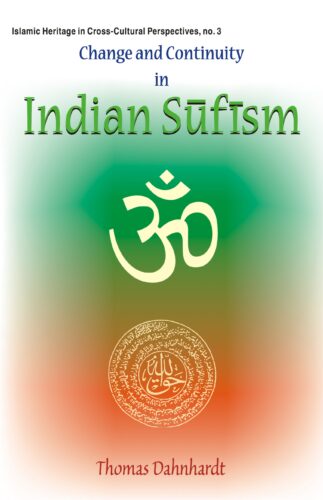
Dr. Thomas Dahnhardt deals with the evolution of the Indian lineage of the Naqshbandiyya also called Mujaddidiyya to study the spiritual symbiosis between the Hindu and Muslim communities. He surveys various masters of the tradition, the establishment of a new khanaqah and the emergence and methodology of the Hindu offshoot of the Mujaddidiyya Mazhariyya.
The common heritage of India is an active concept expressing itself in the myriad forms of integration of diverse cultures and traditions. Change and Continuity in Indian Sufism explores this common heritage through a study of the esoteric relationship between Indias two major religious traditions, Hinduism and Islam as expressed in the sufi tradition. Dr. Thomas Dahnhardt focuses on the evolution of the Indian lineage of the Naqshbandiyya, generally known as the Mujaddidiyya, in Indian sufism as an example of the intense spiritual symbiosis between the Hindu and Muslim communities. Based on a field study among the Hindu and Muslim representatives of the Naqshbandiyya lineage, he presents a social and historical study of the Naqshbandiyya Mujaddidiyya, surveying the various masters of the tradition and taking up specifically the establishment of a new khanaqah of the Mazhariyya branch of the Mujaddidiyyal in Old Delhi, one of the most important Naqshbandi centres of the tradition in the Indian subcontinent. The work goes in detail into the emergence, doctrines and methodology of the Hindu offshoot of the Mujaddidiyya Mazhariyya along with creation of regional sub-Hindu branches. The book would be useful to scholars of inter-religious studies, Sufism and Indian religious traditions as well as general readers interested in the process of integration of traditions and communities.

Dr. Thomas Dahnhardt deals with the evolution of the Indian lineage of the Naqshbandiyya also called Mujaddidiyya to study the spiritual symbiosis between the Hindu and Muslim communities. He surveys various masters of the tradition, the establishment of a new khanaqah and the emergence and methodology of the Hindu offshoot of the Mujaddidiyya Mazhariyya.
The common heritage of India is an active concept expressing itself in the myriad forms of integration of diverse cultures and traditions. Change and Continuity in Indian Sufism explores this common heritage through a study of the esoteric relationship between Indias two major religious traditions, Hinduism and Islam as expressed in the sufi tradition. Dr. Thomas Dahnhardt focuses on the evolution of the Indian lineage of the Naqshbandiyya, generally known as the Mujaddidiyya, in Indian sufism as an example of the intense spiritual symbiosis between the Hindu and Muslim communities. Based on a field study among the Hindu and Muslim representatives of the Naqshbandiyya lineage, he presents a social and historical study of the Naqshbandiyya Mujaddidiyya, surveying the various masters of the tradition and taking up specifically the establishment of a new khanaqah of the Mazhariyya branch of the Mujaddidiyyal in Old Delhi, one of the most important Naqshbandi centres of the tradition in the Indian subcontinent. The work goes in detail into the emergence, doctrines and methodology of the Hindu offshoot of the Mujaddidiyya Mazhariyya along with creation of regional sub-Hindu branches. The book would be useful to scholars of inter-religious studies, Sufism and Indian religious traditions as well as general readers interested in the process of integration of traditions and communities.
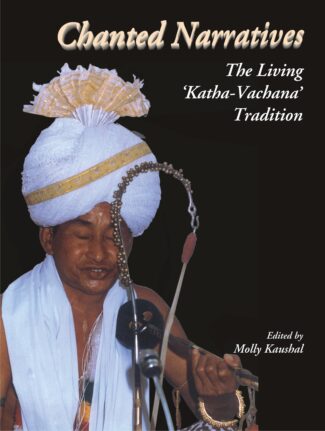
The volume offers a fascinating study of chanted narratives from different regions of India and parts of Southeast Asia. It explores the nature of orality and its various attendant aspects, like composition, performance, transmission modes, socio-economic context, and the relationship that exists between its performer and the audience.
Every region/community of the world has its sahre of oral creativity, in varying measures though. And, accordingly, has its own legacy of chanted narratives: epical, hostorical, mythical, romantic, or even ritualistic. Which have long survived in the collective memory of its people, having been handed down from generation to generation. Confronted, however, by the cornucopian techno-centrism of todays life, these oral narratives are on their way out everywhere like many other vibrant cultural phenomena. Highlighting why we need to preserve this intangible heritage of mankind, the volume offers a fascinating study of chanted narratives from different regions of India and parts of Southeast Asia. Essentially a multi-author work, it explores the nature of orality and its various attendent aspects, like composition, performance, transmission modes, socio-economic context, and the relationship that exists between its performer and the audience. Also addressing methodological issues concerning the existing definitions and terminologies, the authors argue for a paradigm shift in the academic discourse on orality and oral cultures. Carrying twenty four contributors of leading scholars from France, Germany, India, Indonesia, Italy, Nepal, New Zealand, Sri Lanka and UK, the book not only provides theoretical insights into the complex nature of orality, but sets out a rich repertoire of chanted narratives as well. Folklorists, anthropologists, historians and scholars of Indian cultures will find it a useful acquisition.
| There are no products |